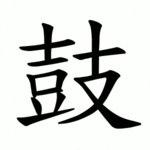
Radical 20 or radical wrap (勹部) meaning "wrap" is one of the 23 Kangxi radicals composed of 2 strokes.
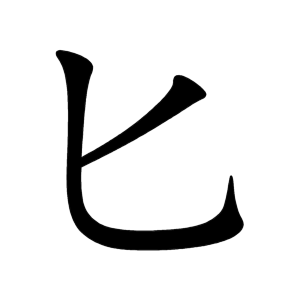
Radical 21 or Radical spoon (匕部) meaning "spoon" is one of the 23 Kangxi radicals composed of two strokes.

Radical 32 or radical earth (土部) meaning "earth" is one of the 31 Kangxi radicals composed of three strokes.
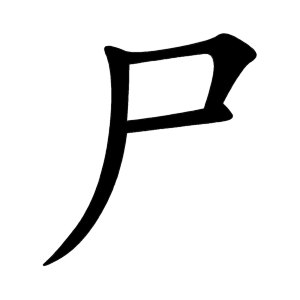
Radical 44 or radical corpse (尸部) meaning "corpse" is one of the 31 Kangxi radicals composed of three strokes.

Radical 57 or radical bow (弓部) meaning "bow" is one of the 31 Kangxi radicals composed of three strokes.

Radical 72 or radical sun (日部) meaning "sun" or "day" is one of the 34 Kangxi radicals composed of 4 strokes.
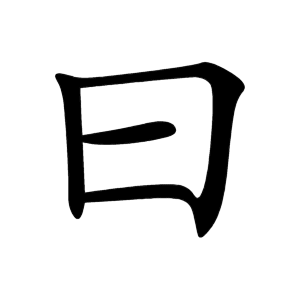
Radical 73 or radical say (曰部) meaning "say" is one of the 34 Kangxi radicals composed of 4 strokes.

Radical 89 or radical double x (爻部) meaning "trigrams" is one of the 34 Kangxi radicals composed of 4 strokes.
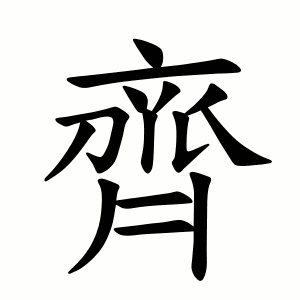
Radical 210 meaning "even" or "uniformly" is 1 of 2 Kangxi radicals composed of 14 strokes.

Radical 208 meaning "rat" or "mouse" is 1 of 4 Kangxi radicals composed of 13 strokes.
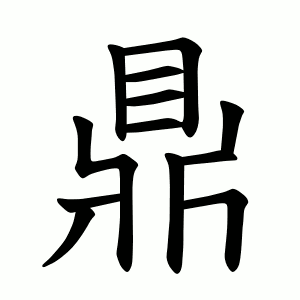
Radical 206 meaning "sacrificial tripod" or "three-legged cauldron" is 1 of 4 Kangxi radicals composed of 13 strokes.

Radical 205 meaning "frog" or "amphibian" is 1 of 4 Kangxi radicals composed of 13 strokes.
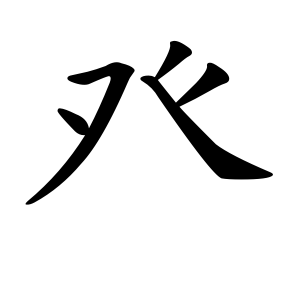
Radical 105 or radical dotted tent (癶部) meaning "footsteps" or "legs" is one of the 23 Kangxi radicals composed of 5 strokes.

Radical 111 or radical arrow (矢部) meaning "arrow" is one of the 23 Kangxi radicals composed of 5 strokes.

Radical 135 or radical tongue (舌部) meaning "tongue" is one of the 29 Kangxi radicals composed of 6 strokes.

Radical 136 or radical oppose (舛部) meaning "oppose" is one of the 29 Kangxi radicals composed of 6 strokes.

Radical 144 or radical walk enclosure (行部) meaning "go" or "do" is one of the 29 Kangxi radicals composed of 6 strokes.
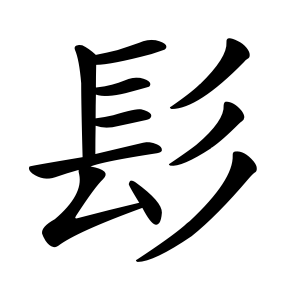
Radical 190 or radical hair (髟部) meaning "hair" is one of the 8 Kangxi radicals composed of 10 strokes.

Radical 200 or radical hemp (麻部) meaning "hemp" or "flax" is one of the 6 Kangxi radicals composed of 11 strokes. Historically, it is the Chinese word for cannabis.
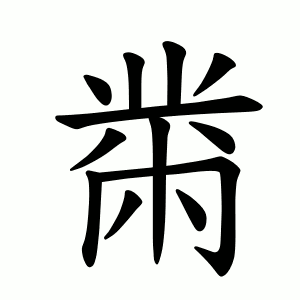
Radical 204 meaning "embroidery" or "needlework" is 1 of 4 Kangxi radicals composed of 12 strokes.
This page is based on this
Wikipedia article Text is available under the
CC BY-SA 4.0 license; additional terms may apply.
Images, videos and audio are available under their respective licenses.
